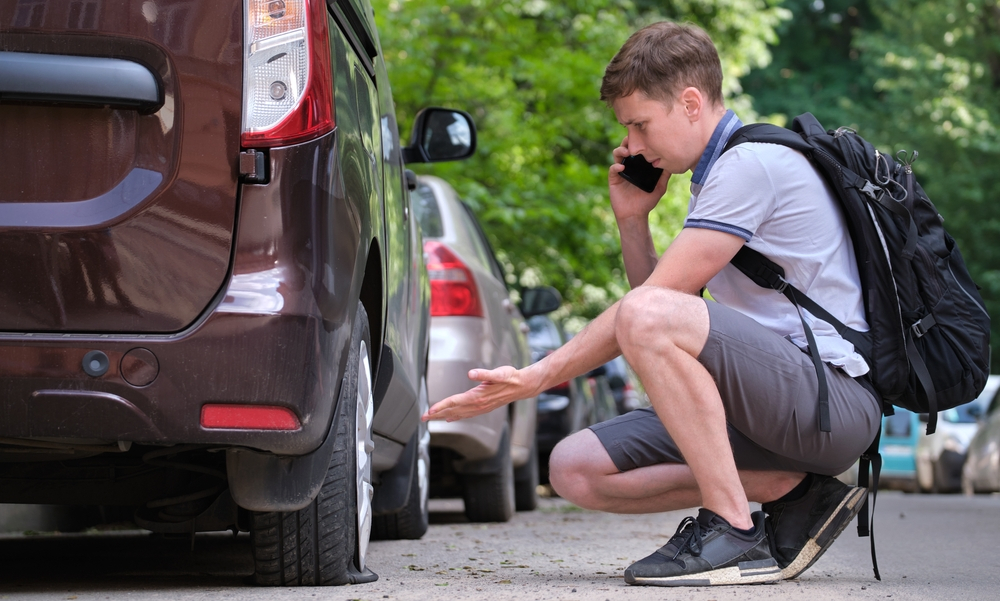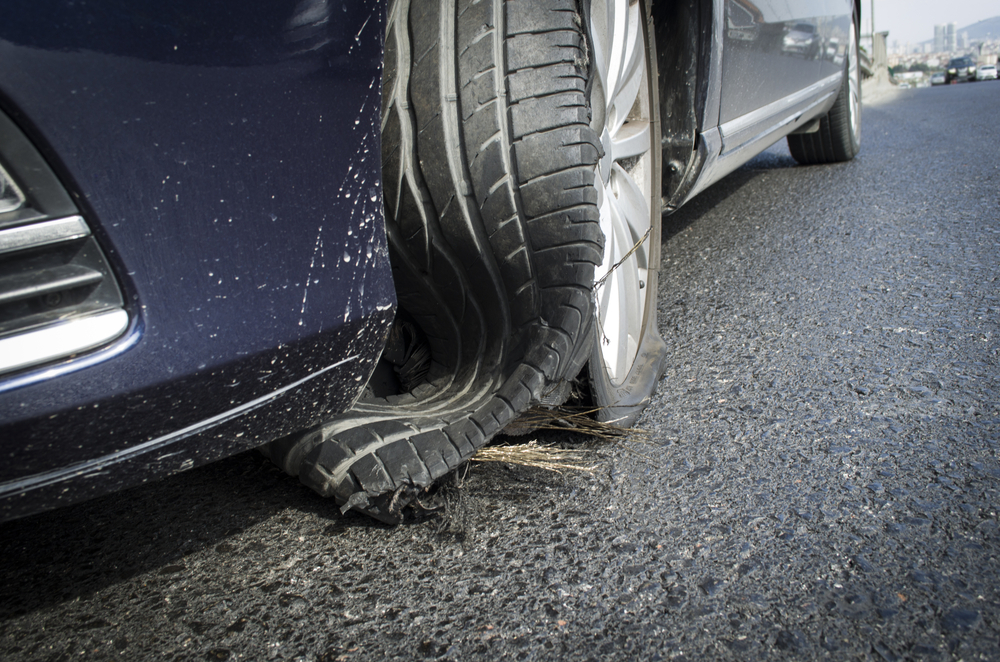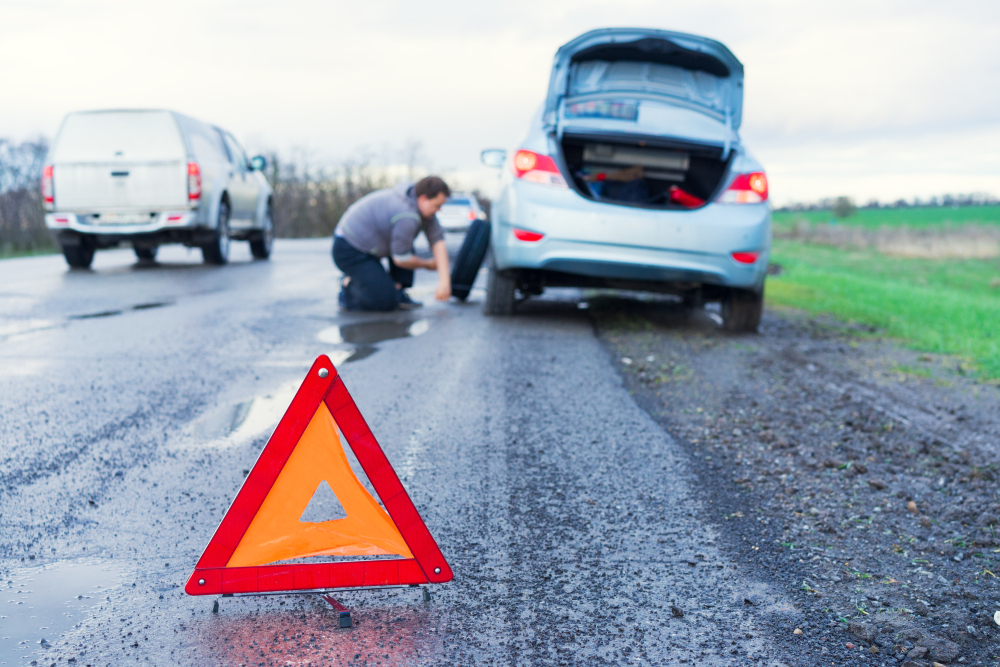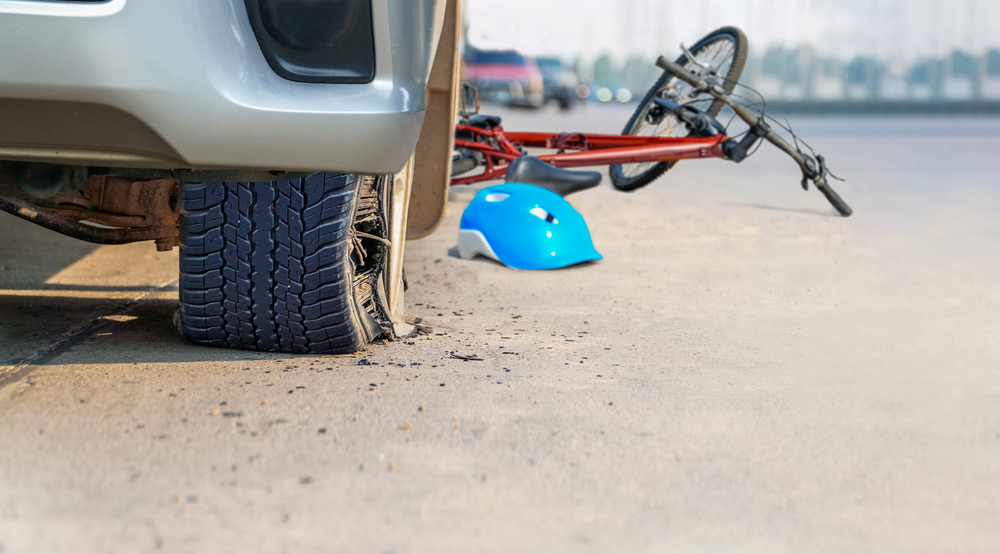Why Do Tyres Burst In The Summer? How To Prevent It
As temperatures rise during the summer months, the danger of tyre bursts significantly increases risks to your safety. Understanding the reasons behind tyre bursts and taking preventive measures can help ensure a safe and smooth driving experience.
This article will delve into the various factors that contribute to tyre bursts, the dangers associated with them, how to identify worn-out tyres, essential tyre maintenance tips, the importance of tyre pressure, choosing the right tyres, the impact of driving style on tyre wear and safety, dos and don’ts for safe driving, tyre burst prevention strategies, and what to do if your tyre bursts.
Reasons Behind Tyres Bursting in Summer
Understanding the reasons behind these tyre bursts is crucial to ensure the safety of every driver. Let’s delve into each factor in detail:
1. High Temperatures
During summer, the mercury soars, causing the road surface to heat up. Excessive heat directly affects the tyre’s rubber compound, making it more susceptible to failure. Excessive heat can weaken the tyre structure, leading to higher tyre bursts and increasing risks to your safety.
2. Age Of The Tyres
The age of the tyres plays a significant role in their durability. Over time, the rubber compounds in tyres deteriorate, becoming less flexible and prone to cracks. Older tyres are more likely to fail under excessive heat, especially if they have not been properly maintained.
3. Tyre pressure
Maintaining proper tyre pressure is essential for safe driving. In summer, the excessive heat causes the air inside the tyre to expand, increasing the pressure. If the tyres are already overinflated or if the pressure is not regularly checked, the excessive heat can push them beyond their limits, leading to a tyre bursting.
4. High Speed For Long Durations
Summer vacations often involve long road trips, where drivers tend to maintain higher speeds for extended periods. Continuous high-speed driving generates additional heat, putting excessive strain on the tyres. This prolonged excessive heat exposure can weaken the tyre structure and increase the likelihood of a tyre bursting.
5. Faulty Tyres
Defective manufacturing or poor-quality control can result in faulty tyres. These tyres may have weak spots or structural weaknesses that make them more prone to tyre bursting, especially when exposed to high temperatures. Regularly inspecting tyres for any signs of defects is crucial for preventing accidents.
6. Vehicle Weight
The weight of the vehicle, including passengers and cargo, has a direct impact on tyre performance. Overloading the vehicle during summer trips can exceed the recommended weight limits set by the manufacturer. This places additional stress on the tyres, making them more susceptible to failure.
7. Overloading
Common causes of a tyre burst is overloading. Overloading specifically refers to exceeding the weight capacity of individual tyres. When the load on a tyre exceeds its maximum limit, the tyre becomes strained and vulnerable to bursting, particularly in hot weather conditions.
8. Under-Inflation
Driving with under-inflated tyres poses significant risks to your safety, regardless of the season. However, in summer, the excessive heat exacerbates the problem. Under-inflated tyres generate more heat due to increased flexing of the sidewalls. The excessive heat buildup can cause the tyre to fail suddenly.
9. Incorrect Tyre Fitting
Improper installation or fitting of tyres can create numerous problems. When tyres are not correctly aligned or balanced, they undergo uneven wear and tear, making them more prone to bursting. It is crucial to ensure that tyres are fitted correctly by a professional to avoid risks to your safety.
10. Tyre Quality
The quality of the tyres you choose for your vehicle matters greatly. Opting for tyres from reputable brands that meet industry standards is essential. Inferior quality tyres may not withstand high temperatures or maintain their integrity under stress, making them more prone to bursting.
11. Cuts, Nicks, And Punctures In The Tyre
Any damage to the tyre, such as cuts, nicks, and punctures, compromises its structural integrity. When these damages go unnoticed or are left unaddressed, they can worsen over time. The excessive heat in summer exacerbates the weakening process, increasing the likelihood of a sudden tyre burst.
The Danger Lurking: Risks of Tyre Bursts
- Loss of control: When a tyre bursts, it can lead to an immediate loss of control over the vehicle, posing a serious threat to the driver, passengers, and others on the road.
- Rollover accidents: A sudden tyre burst can cause the vehicle to veer off course, resulting in a rollover accident, which can be deadly.
- Collisions: The loss of control caused by a tyre burst increases the risk of collisions with other vehicles, objects, or pedestrians, leading to severe injuries or fatalities.
- Vehicle damage: A tyre bursting can cause extensive damage to the vehicle, including bodywork, suspension system, and other mechanical parts, resulting in costly repairs.
- Personal injuries: In the event of a tyre burst, occupants of the vehicle can sustain serious injuries due to the sudden jolt, impact, or subsequent accidents caused by the loss of control.
- Financial consequences: Dealing with the aftermath of a tyre burst, such as vehicle repairs, medical expenses, and potential legal liabilities, can have significant financial implications.
Spotting Trouble: How to Spot When Your Tyres Are Worn Out
Your tyres play a crucial role in keeping you safe on the road. Worn-out tyres can compromise your vehicle’s performance and increase the hazard of accidents and risks to your safety.
To ensure the safety, it’s important to know how to spot when your tyres are worn out. Here are some key signs to watch out for:
A. Worn Tread
One of the most common signs of tyre wear is a worn-out tread. The tread is the pattern on the surface of the tyre that provides traction and helps maintain grip on the road. Over time, the tread wears down due to constant contact with the road. Inspecting your tyres regularly for worn tread is essential. Look for shallow grooves or bald spots, as they indicate that your tyres need to be replaced.
B. Cracks or Bulges
Cracks or bulges on the sidewall of your tyres are another red flag. These can be caused by various factors such as age, exposure to extreme weather conditions, or impacts with potholes or curbs. Cuts, nicks, and punctures weaken the tyre’s structure and increase the risk of a burst. Bulges indicate that the internal layers of the tyre are damaged and could lead to a sudden failure. If you notice any cracks, bulges, cuts, nicks, and punctures replace the affected tyre immediately.
C. Uneven Wear and Tear
Uneven wear and tear across the surface of your tyres are signs of alignment or suspension system issues. Misaligned wheels or faulty suspension systems can cause the tyres to wear unevenly, leading to a loss of stability and control. To check for uneven wear, run your hand over the tyre’s surface and feel for any irregularities. If you detect significant differences in the wear pattern, it’s time to have your alignment and suspension system checked by a professional.
D. Vibration
Excessive vibration while driving can be an indication of worn-out tyres. If you feel a constant vibration through the steering wheel or the vehicle itself, it could be due to irregular tyre wear or a wheel imbalance. Vibrations can compromise your driving comfort and affect the overall performance of your vehicle. If you experience persistent vibrations, it’s advisable to have your tyres inspected to identify the underlying cuts, nicks, and punctures, the common signs of tyre wear.
Tyre Maintenance Tips 
Apart from knowing common signs of tyre wear, regular maintenance is crucial to extend their lifespan and ensure optimal performance. Here are some essential tyre maintenance tips:
1st. Check Tyre Pressure Regularly
Maintaining the correct tyre pressure is vital to ensure the safety and fuel efficiency. Use a tyre pressure gauge to check the pressure regularly, at least once a month and before long trips. Underinflated tyres can lead to poor handling, decreased traction, and increased fuel consumption, while overinflated tyres can cause a harsh ride and uneven wear.
2nd. Rotate Your Tyres
Tyre rotation involves moving the tyres from one position to another regularly. This helps promote even wear across all the tyres and extends their lifespan. Consult your vehicle’s manual for the recommended rotation pattern and frequency, as it may vary depending on the type of vehicle and tyre.
3rd. Balance Your Tyres
Balancing your tyres ensures that their weight is distributed evenly. Imbalanced tyres can cause vibrations and uneven wear resulting in lose control of the vehicle. Regular balancing, typically done during tyre rotation or when you replace tyres, helps maintain a smooth and comfortable ride.
4th. Inspect Your Tyres
Regular visual inspections of your tyres are essential to catch any potential issues early on. Look for signs of wear, cuts, nicks, and punctures, or foreign objects stuck in the tread. Additionally, examine the sidewalls for cracks or any other visible damage. If you notice any abnormalities, have a professional assess the condition of your tyres.
5th. Drive Carefully
Safe driving practices go a long way. Avoid sudden accelerations and harsh braking, as these actions put excessive stress on the tyres. Be cautious while driving over potholes, and curbs, that cause damage. By practising good driving techniques, you can minimize the wear and cuts, nicks, and punctures on your tyres.
Tyre Pressure: Why It Matters and How to Check It
Maintaining the correct tyre pressure is essential for several reasons:
- Tyre wear and tear: Maintaining the recommended tyre pressure plays a vital role in extending the lifespan of your tyres. Underinflated tyres cause increased friction between the tyre and the road surface, resulting in uneven wear on the tread. This can lead to premature tyre failure. On the other hand, overinflated tyres wear out more quickly in the centre of the tread, compromising their grip and safety.
- Fuel efficiency: Underinflated tyres increase rolling resistance, making your engine work harder to propel the vehicle forward. This extra effort translates into higher fuel consumption leading to decreased fuel efficiency. Properly inflated tyres improve fuel economy, saving you money in the long run.
- Handling: Maintaining the right tyre pressure is essential for handling and control of your vehicle. Underinflated tyres make your vehicle less responsive while cornering resulting in lose control of the vehicle. This compromises your ability to safely navigate through various road conditions, especially in emergencies. Properly inflated tyres ensure better stability, grip, and control, enhancing overall handling and ensure the safety.
To Check Your Tyre Pressure:
- Use a reliable pressure gauge.
- Remove the valve cap from the tyre.
- Press the gauge onto the valve stem firmly.
- Read the pressure display and compare it to the recommended pressure specified by the vehicle manufacturer.
- If the pressure is below the recommended level, add air until the correct pressure is reached.
- If it’s above the recommended level, release air until it reaches the desired pressure.
Choosing The Right Tyres for Your Vehicle
Choosing the right tyres for your vehicle is vital to ensure the safety and performance. Consider the following factors when choosing the right tyres:
I. Type of Vehicle
The type of vehicle you drive is a critical factor when choosing the right tyres. Different vehicles have unique performance requirements. For example, sports cars may require tyres that provide excellent grip and handling at high speeds, while SUVs might prioritize off-road capabilities and durability.
II. Tyre Size
Ensuring the correct tyre size is crucial for maintaining the overall balance and performance of your vehicle. The tyre size is determined by the manufacturer and can be found in your vehicle’s owner’s manual or on the sidewall of your current tyres. Choosing the wrong size can affect the accuracy of speedometer readings and impact the vehicle’s stability and handling, preceding to lose control of the vehicle.
III. Tread Depth
The tread depth of your tyres affects their ability to grip the road surface and disperse water effectively. To ensure the safety, it’s important to check the tread depth regularly. Replace your tyres if the tread depth reaches the legal minimum limit, typically 1.6mm. Worn-out tyres with insufficient tread depth have reduced traction, particularly on wet or slippery roads, increasing the risks to your safety due to skidding.
IV. Speed Rating
Consider the speed rating when choosing the right tyres. Speed ratings indicate the maximum speed capability of a tyre. It’s essential to choose tyres with a speed rating that matches or exceeds your vehicle’s top speed. This guarantees optimal performance and ensure the safety, especially during high-speed driving.
V. Tyre Brand and Quality
The brand and quality of tyres can significantly impact their performance, and durability, and ensure the safety. Pick reputable tyre brands when choosing the right tyres. High-quality tyres not only offer better traction and handling but also tend to last longer, ensuring you don’t lose control of the vehicle.
VI. Driving Style
Your driving style also influences the type of tyres suitable for your vehicle. If you frequently drive at high speeds or have an aggressive driving style, consider tyres that are specifically designed for high-speed driving while still offering good fuel efficiency. These tyres often feature advanced tread patterns and rubber compounds to guarantee enhanced performance and ensure the safety under demanding conditions.
Driving Style: How It Impacts Your Tyre Safety
Your driving style plays a significant role in tyre wear and safety. Certain habits can accelerate common signs of tyre wear and increase the danger of tyre bursts and risks to your safety. Consider the following factors:
- Speed: Excessive speeding generates excessive heat in the tyres, leading to accelerated wear and cuts, nicks, and punctures, increasing the chances of a tyre bursting. Adhere to speed limits and drive responsibly.
- Cornering: Taking corners at high speeds or sharply can strain the tyres and cause uneven wear, cuts, nicks, and punctures. Approach corners at controlled speeds to reduce stress on the tyres.
- Overloading: Overloading beyond the recommended limits puts strain on the tyres, leading to excessive heat buildup and potential bursts. Avoid overloading your vehicle.
- Driving On Rough Roads: Rough or uneven roads can damage the tyres and increase the danger of tyre bursting and risks to your safety. Drive carefully and avoid potholes or other road hazards whenever possible and don’t lose control of the vehicle.
Dos and Don’ts for Safe Driving
To ensure the safety and prevent tyre bursting, follow these dos and don’ts:
Dos for Safe Driving
- Check your tyre pressure regularly and maintain the recommended levels.
- Inspect your tyres for common signs of tyre wear and damage or cuts, nicks, and punctures regularly.
- Rotate your tyres as recommended by the vehicle manufacturer.
- Choosing the right tyres for your vehicle based on its specifications and driving needs.
Don’ts for Safe Driving
- Overloading your vehicle beyond its recommended capacity.
- Drive with worn tyres showcasing common signs of tyre wear. Replace them promptly.
- Ignore warning signs such as vibrations, uneven wear, or visible damage on the tyres.
- Mix tyre types or sizes. Ensure all four tyres match in terms of size, type, and tread pattern.
Tyre Burst Prevention 101: Tyre Safety Rules to Follow
Taking proactive measures to prevent tyre bursts is crucial. Consider the following prevention strategies:
- Maintain correct tyre pressure. Regularly check and adjust tyre pressure according to the manufacturer’s recommendations.
- Conduct regular checks for cuts, nicks, and punctures, cracks, bulges, or signs of damage on your tyres. Address any issues promptly.
- Replace damaged tyres showing common signs of tyre wear promptly. Delaying tyre replacement increases the danger of tyre bursting and risks to your safety.
- Avoid sudden acceleration or braking, as these actions put stress on the tyres. Accelerate and decelerate gradually for smoother tyre performance.
- Take turns slowly and avoid sharp turns that strain the tyres.
- Stay vigilant while driving and try to avoid potholes or other road hazards that can damage the tyres.
- Invest in high-quality tyres from reputable brands when choosing the right tyres.
When Disaster Strikes: What to Do If Your Tyre Bursts
In the unfortunate event of a tyre burst, follow these steps to ensure the safety:
- Keep calm and avoid panicking. Maintain a firm grip on the steering wheel and don’t lose control of the vehicle.
- Instead of applying sudden braking, use your accelerator lightly to maintain and not lose control of the vehicle.
- Don’t take your foot off the accelerator abruptly, as it can destabilize the vehicle. Gradually reduce speed.
- Keep driving at a safe speed until you find a suitable spot to pull over.
- Once you’ve pulled over in a safe location, turn on your hazard lights and proceed to change the tyre if you’re confident and have the necessary tools. Alternatively, call for roadside assistance for professional help.
Stay Safe on Hot Roads
Understanding the reasons behind tyre bursts in summer and implementing preventive measures is crucial for safe driving. Factors such as high temperatures, tyre pressure, ageing tyres, overloading, and driving style can all contribute to tyre bursts.
By conducting regular tyre maintenance, inspecting common signs of tyre wear, checking tyre pressure, choosing the right tyres, and adopting safe driving habits, you can significantly reduce the risk of tyre bursting. Remember to stay calm in the event of a tyre burst and don’t lose control of the vehicle. Follow the necessary steps to ensure the safety and that of others on the road.
Experience top-notch tyre service at Wangara Tyre Auto!
Get your new tyres installed with a 1-year warranty. Plus, take advantage of free tyre issue diagnosis and expert advice.
Visit today & Drive with Confidence





